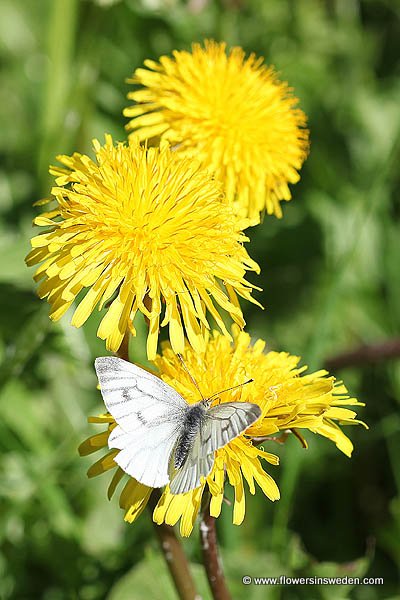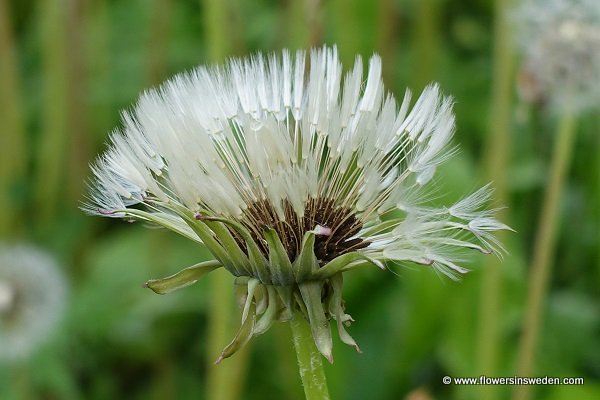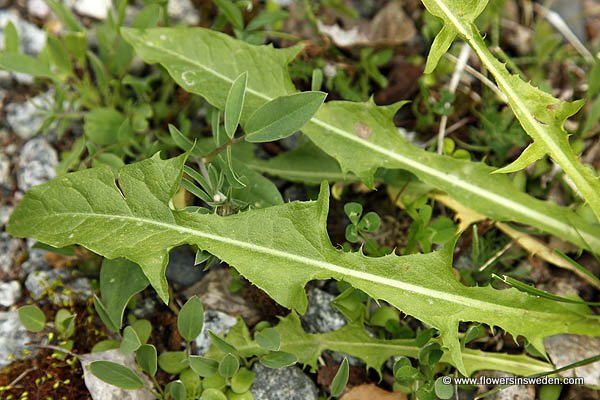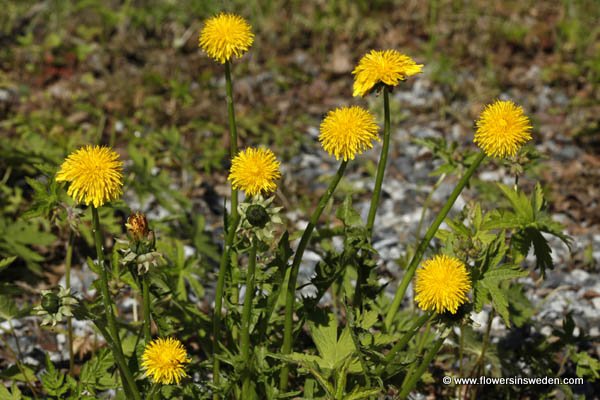|
|
| Life form: |
| Herbaceous perennial, hemicryptophyt |
| Stems: |
| Leafless, hollow, pubescent under calathide head, with milky juice channels; height 5-50 cm; can be tinted purplish |
| Leaves: |
| Rosette, lanceolate or oblong, runcinate incised, from the entire irregular-dentate leaves up to the deep-pinnatipartite leaves with narrow lateral shares, upperleaf sometimes naked, underleaf more often pubescent; 5-40cm. |
| Flowers: |
| Hermaphrodite; yellow, ligulate, internal and tubular florets |
| Flowering Period: |
| May, June |
| Fruits: |
| Light-brown achene with a pappus-cop (6-10 mm) with simple white hair on a long thin leg |
| Habitat: |
| Throughout the country; along roads, trails, garden, park, urban, waste ground |

Derivation of the botanical name:
Taraxacum, medieval name traceable through Arabic to the Persian talkh chakok, meaning "bitter herb".
officinale, officina, herb pharmacy; alias, of or pertaining to; sold as an herb; medicinal.
- The standard author abbreviation F.H. Wigg is used to indicate Friedrich Heinrich Wiggers (1746 – 1811) , a German botanist.



|





